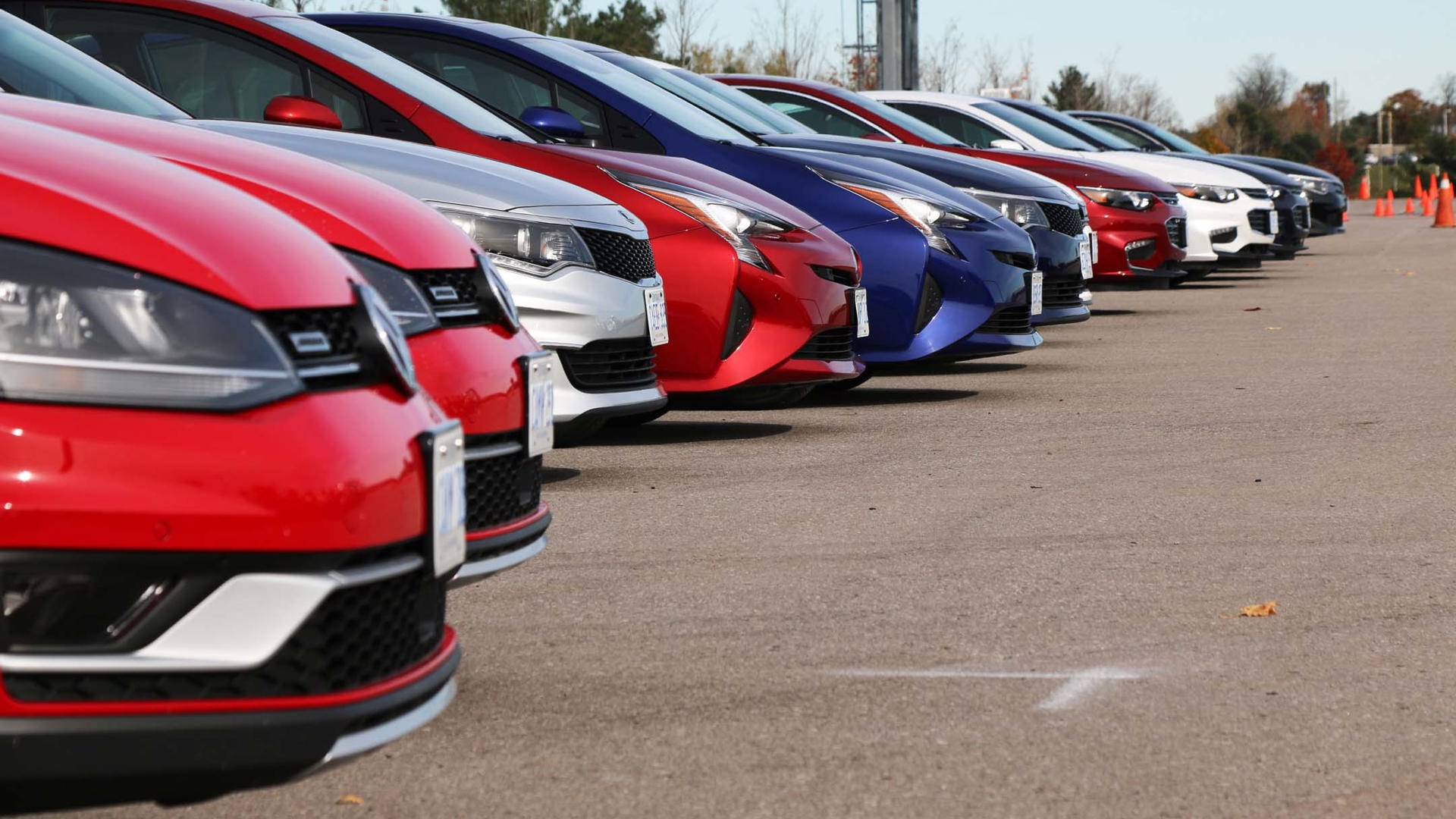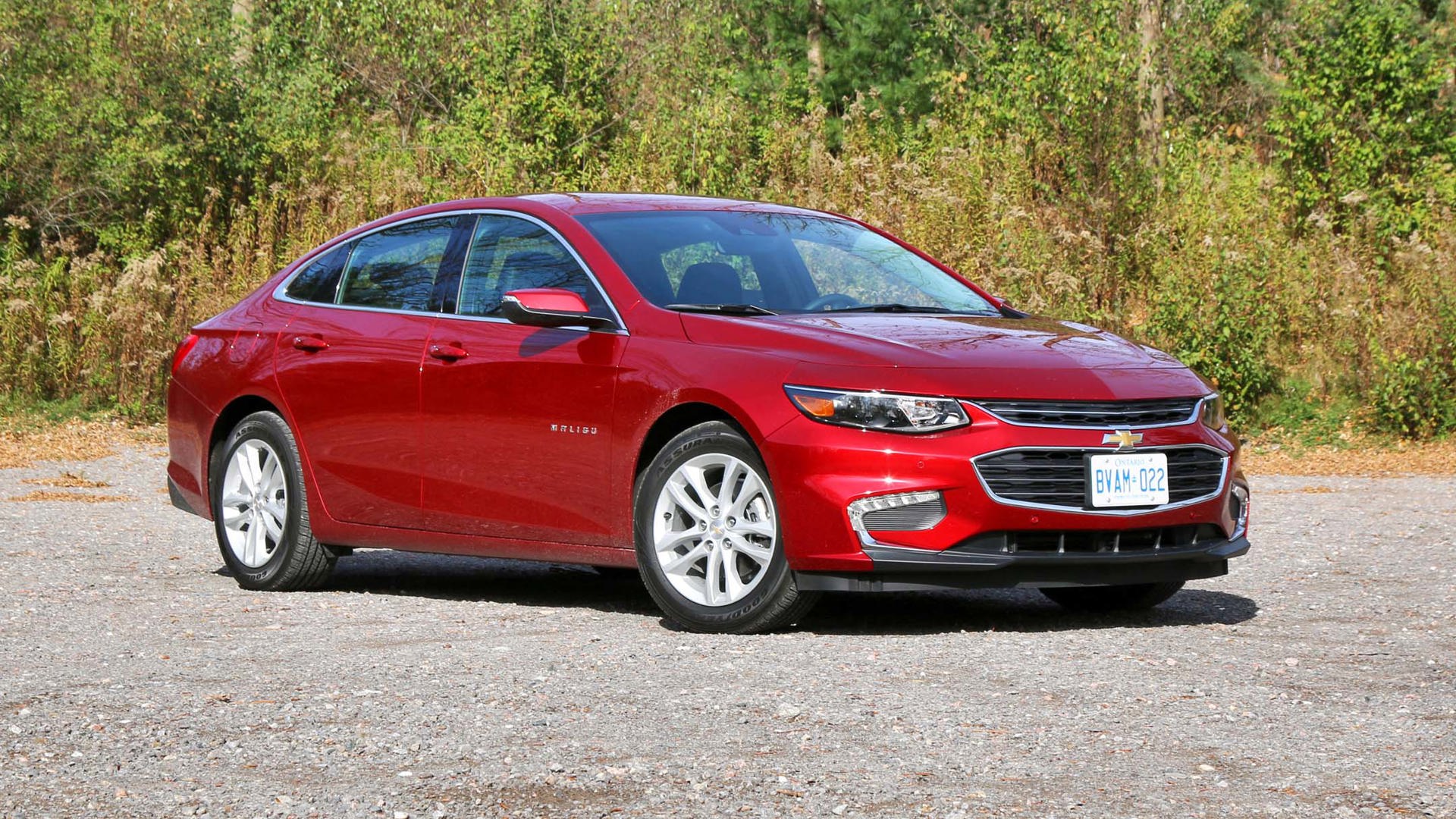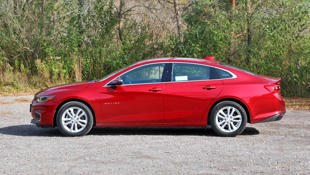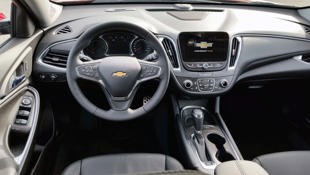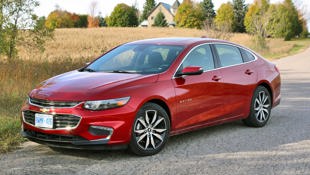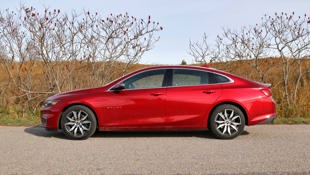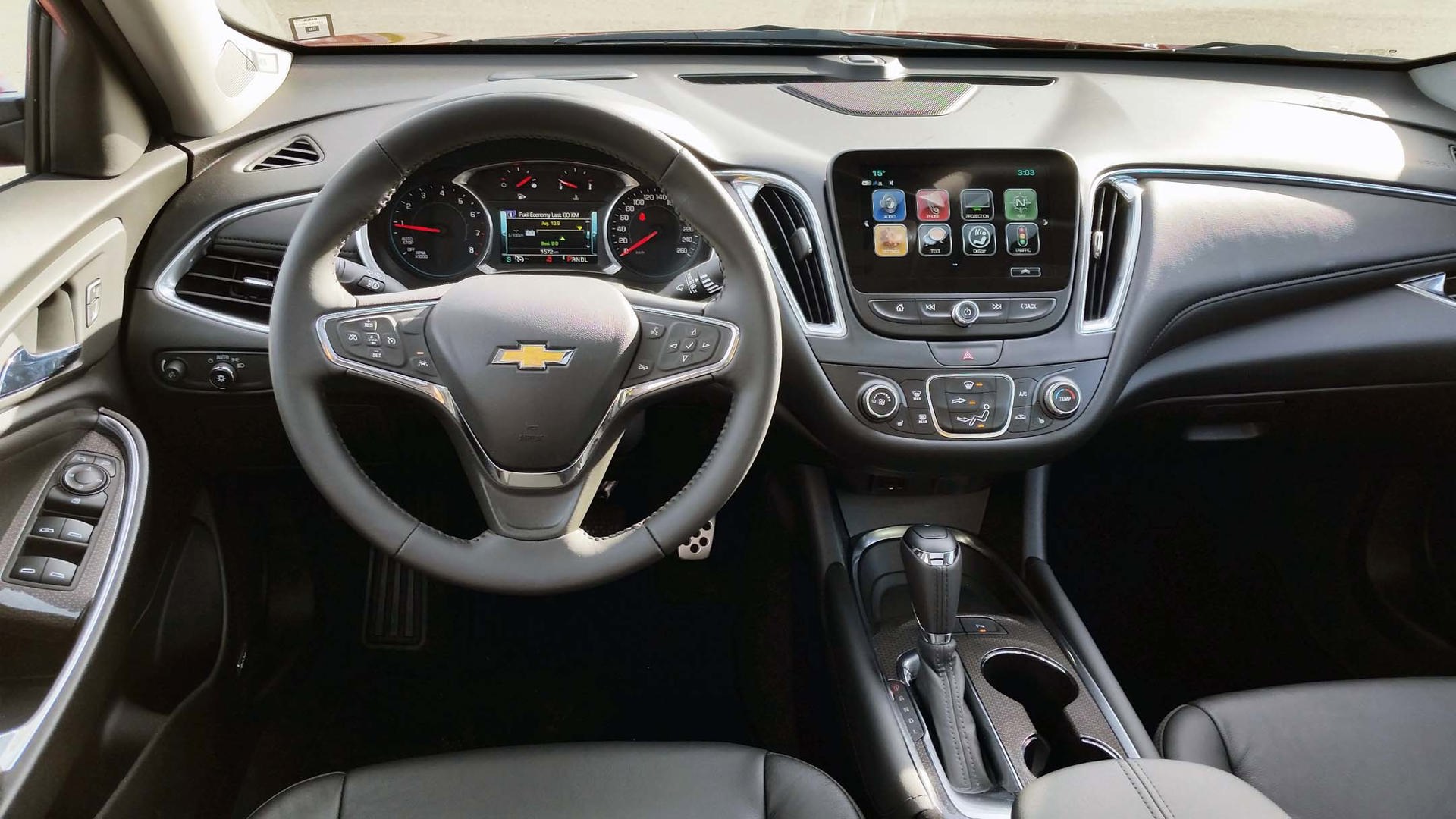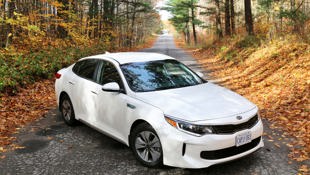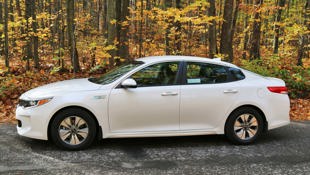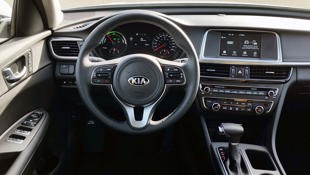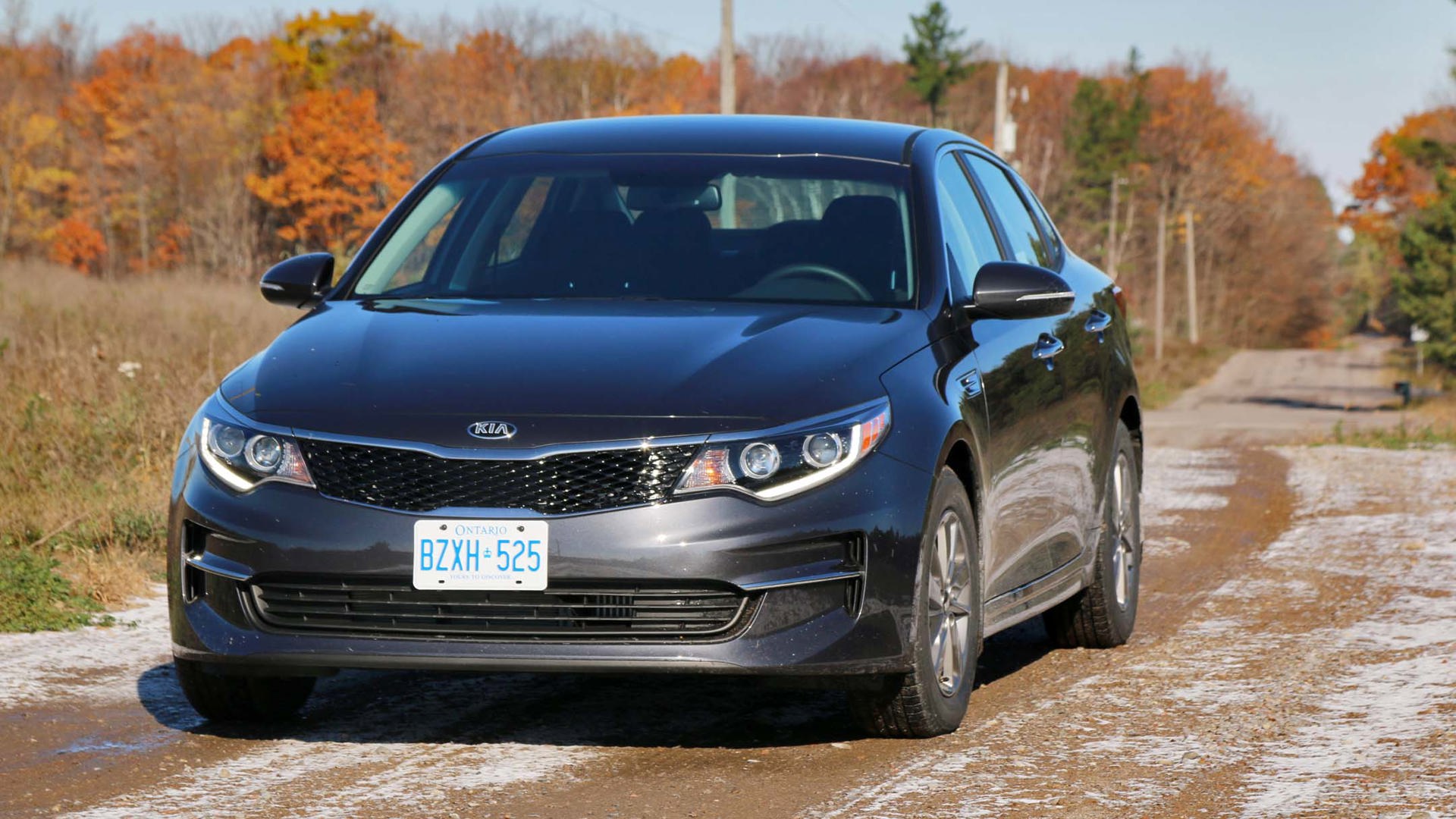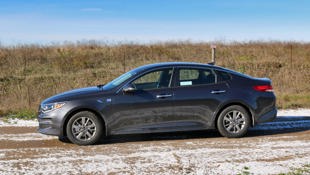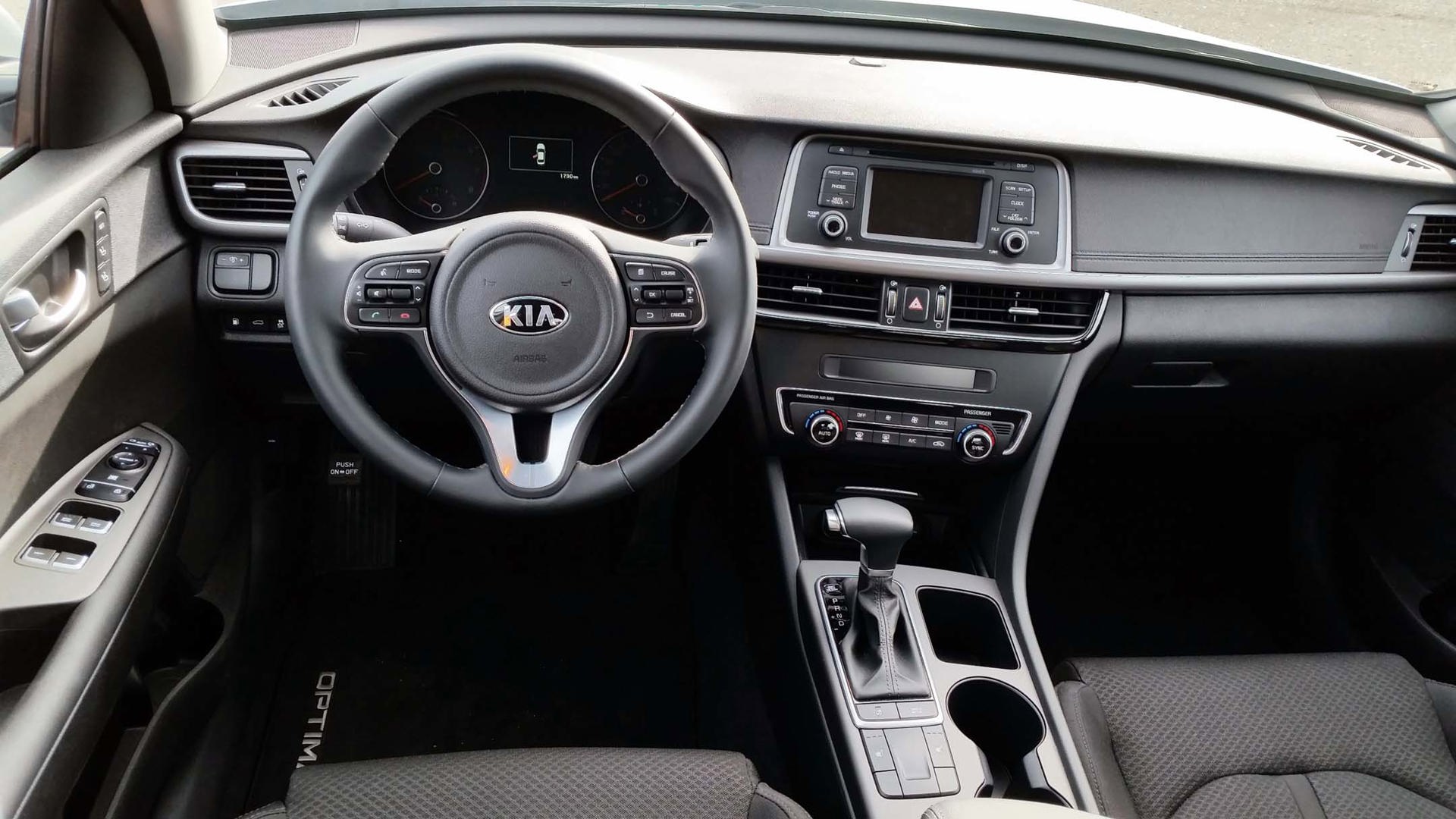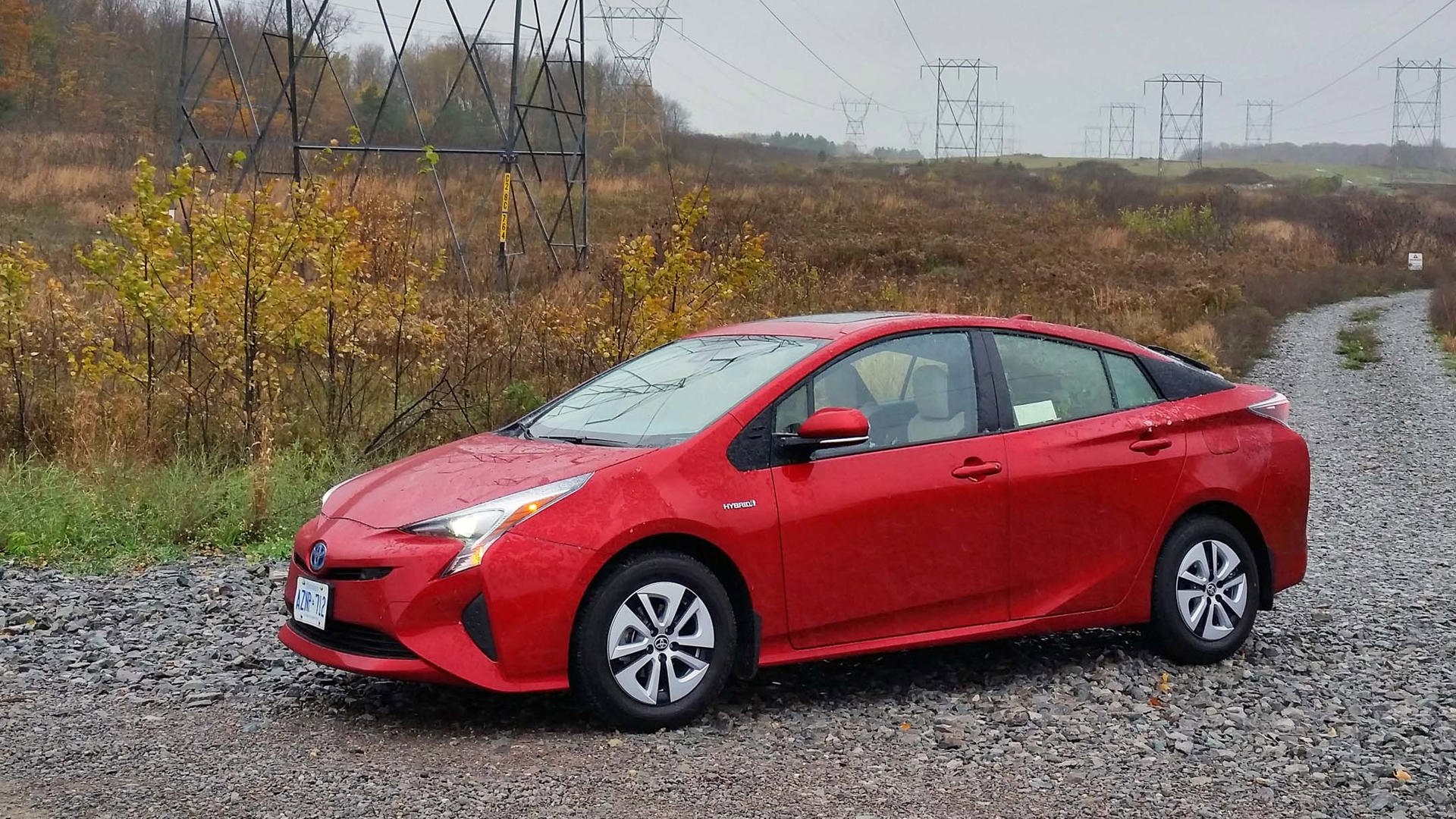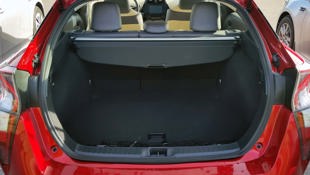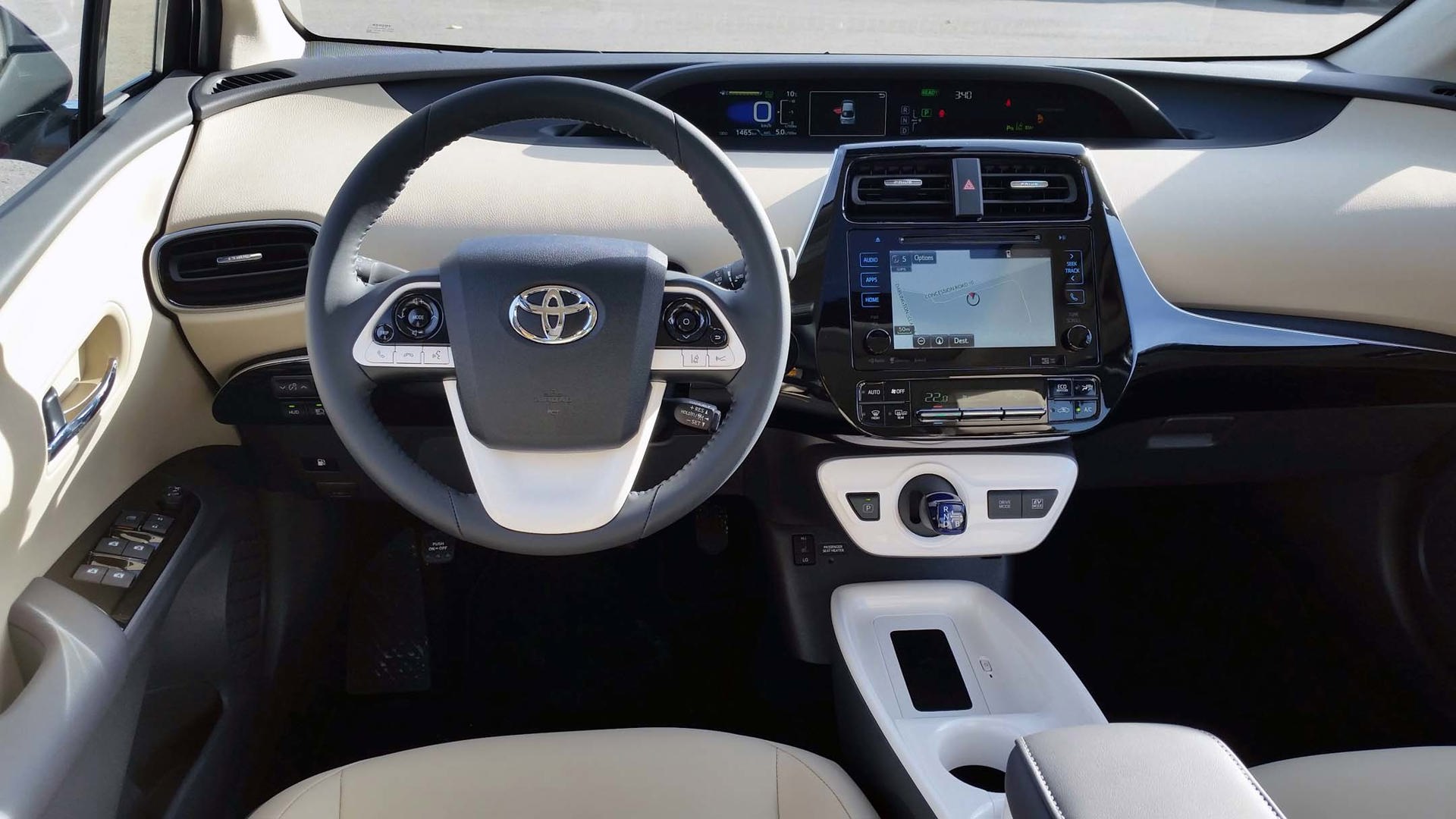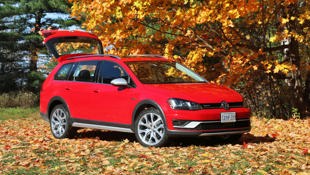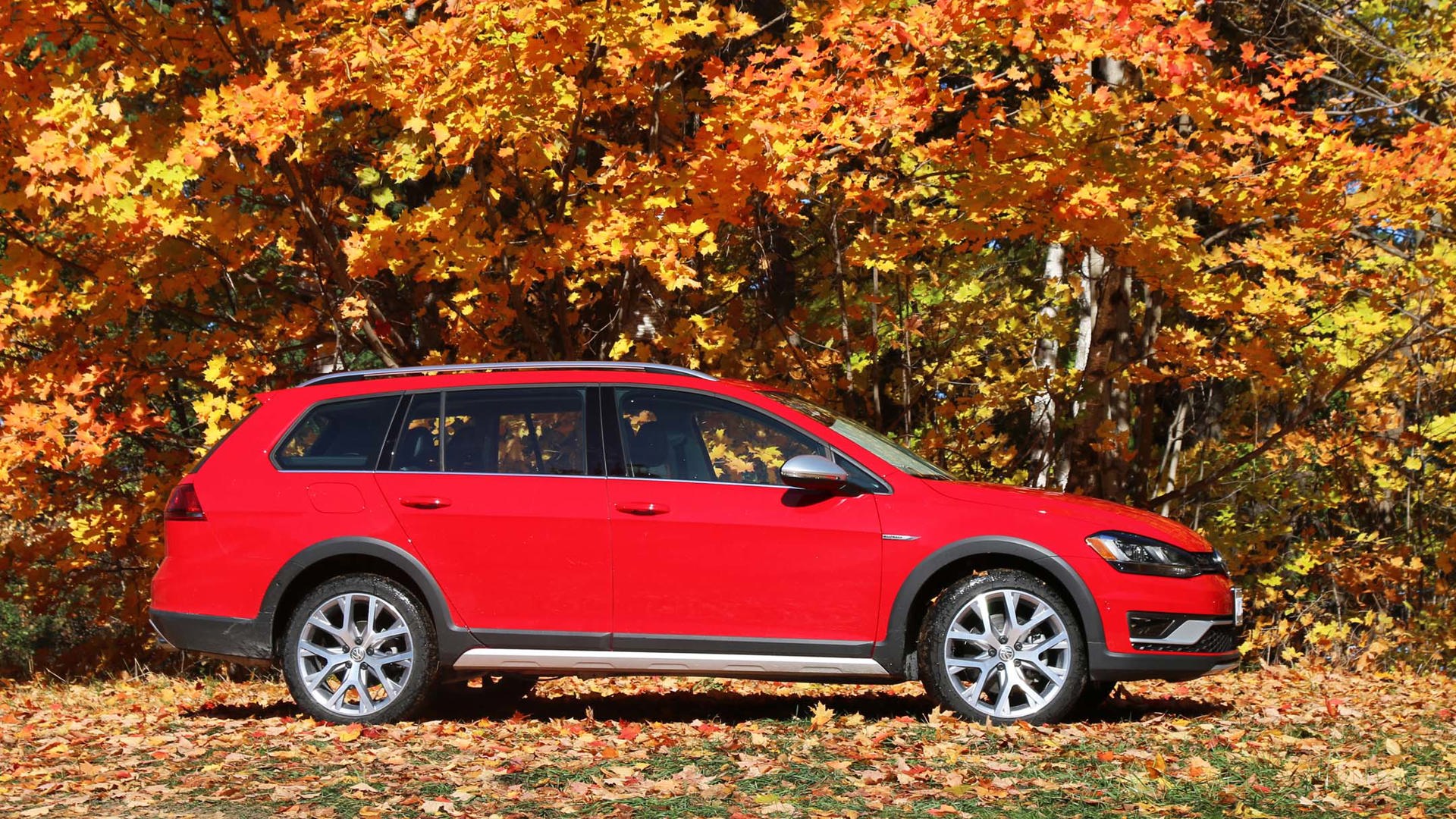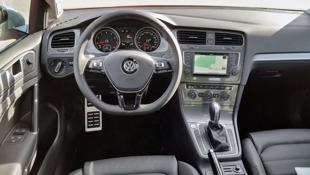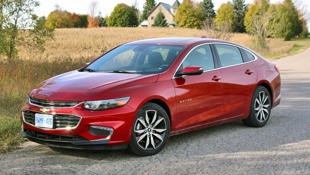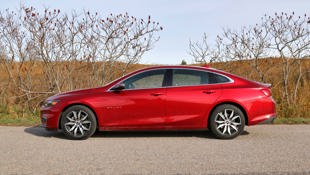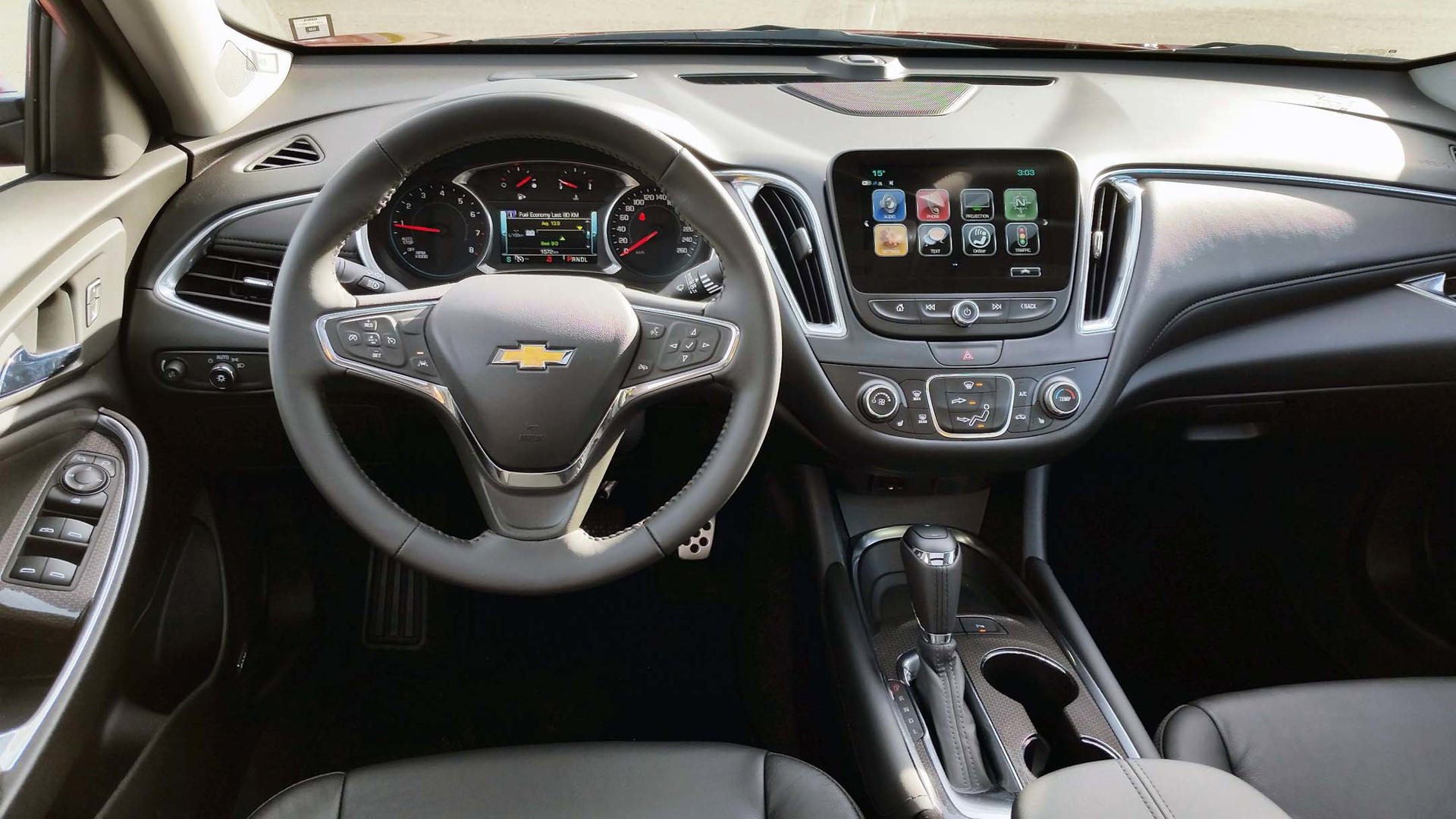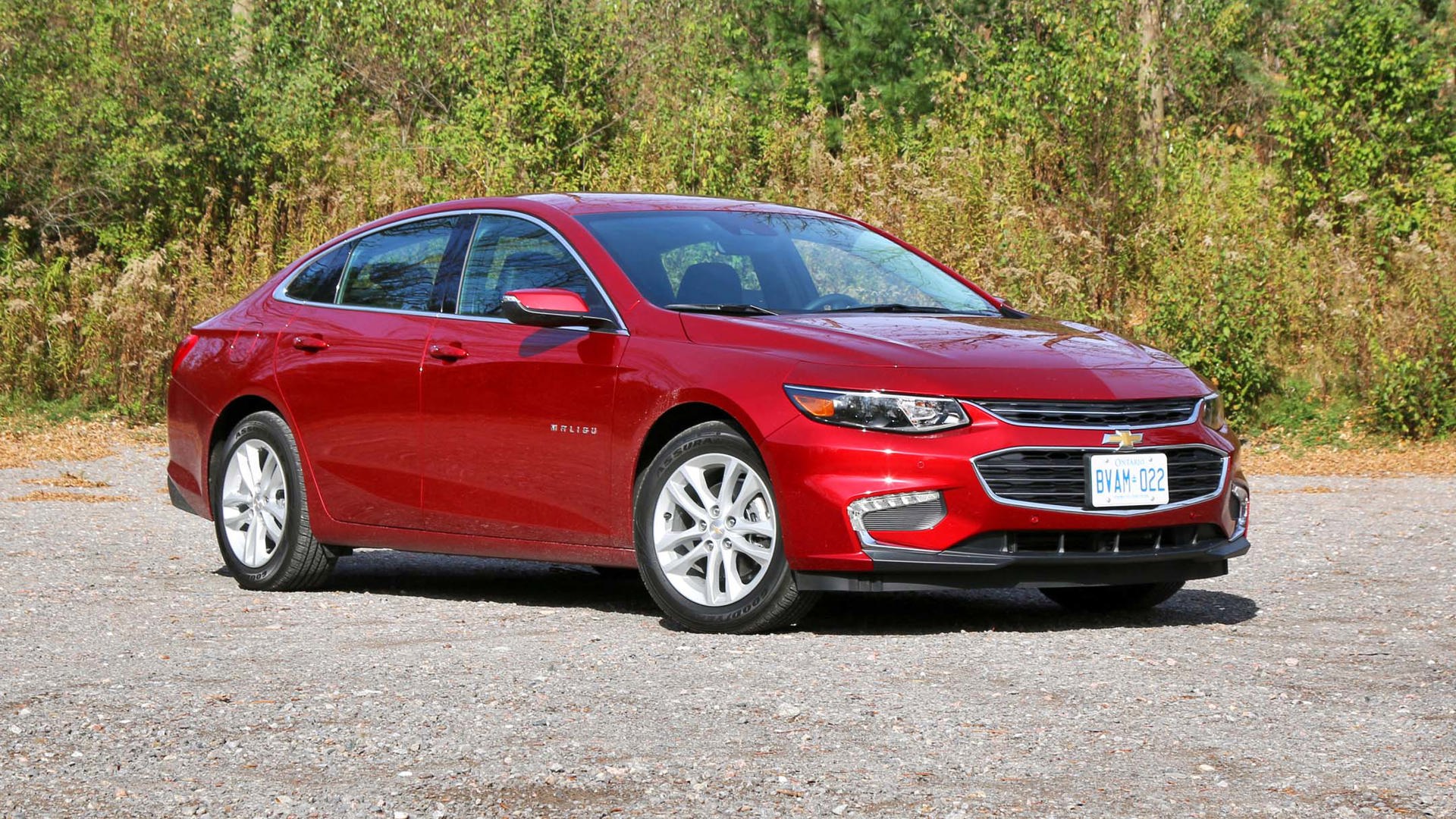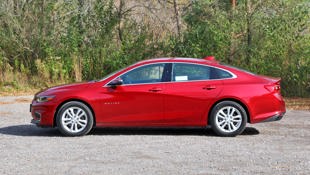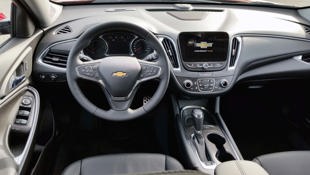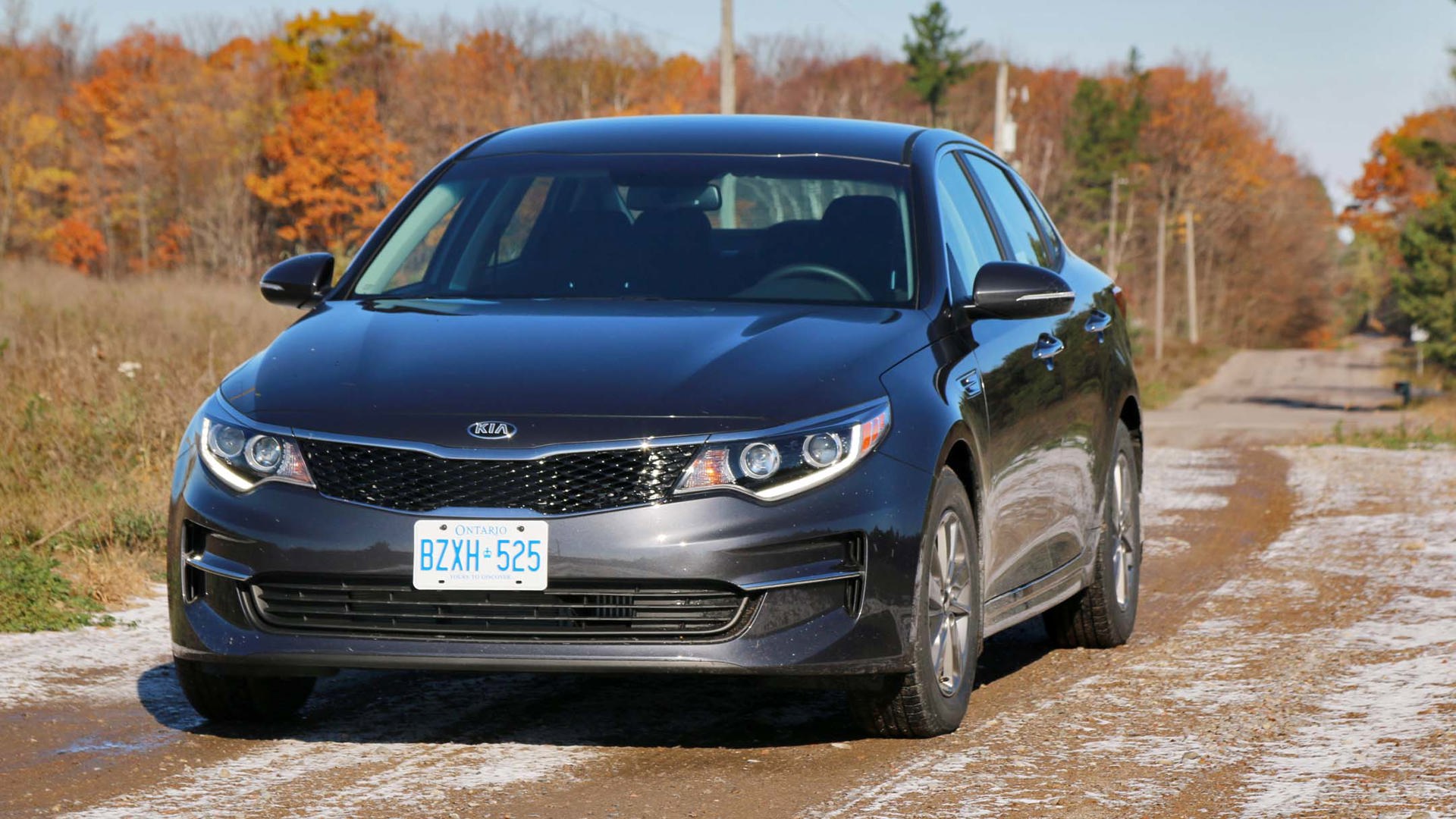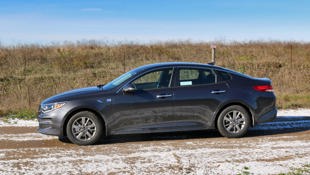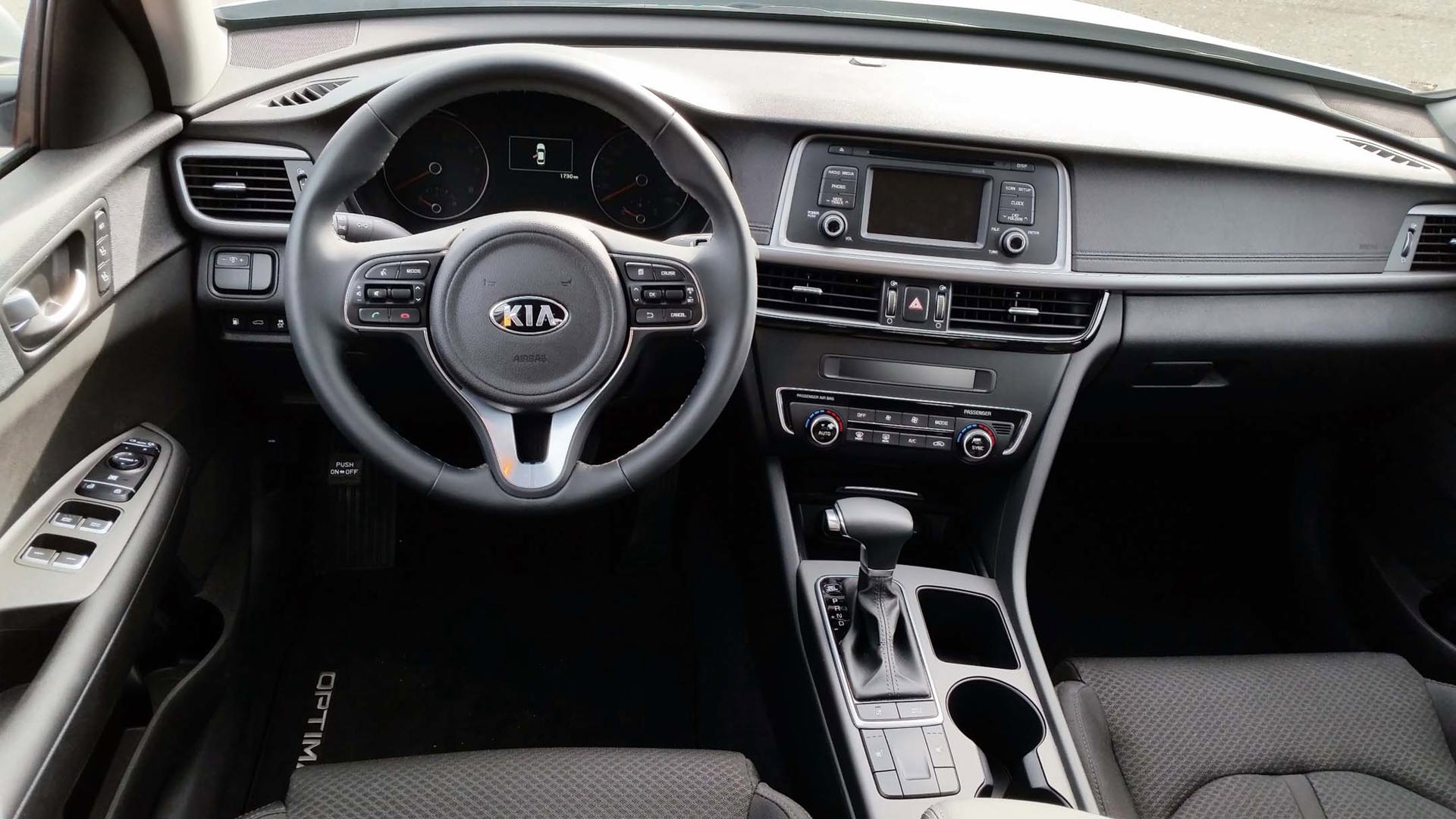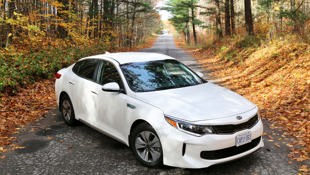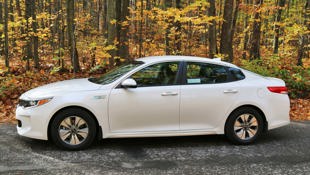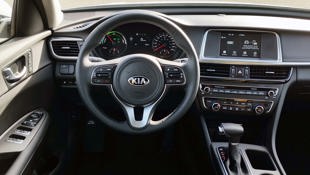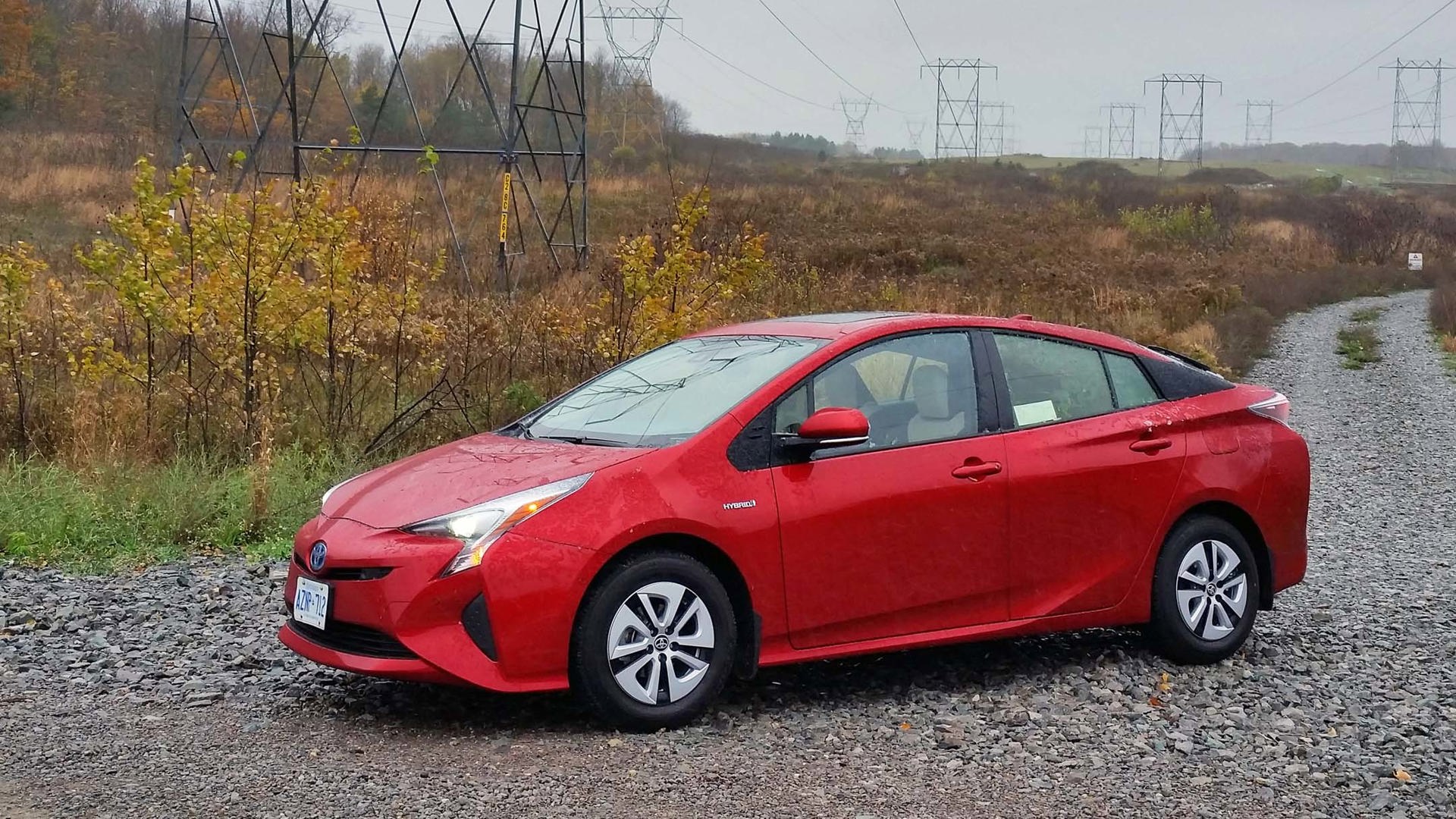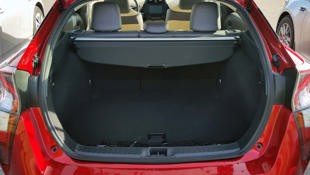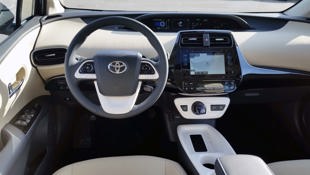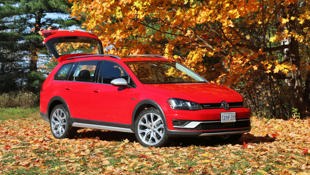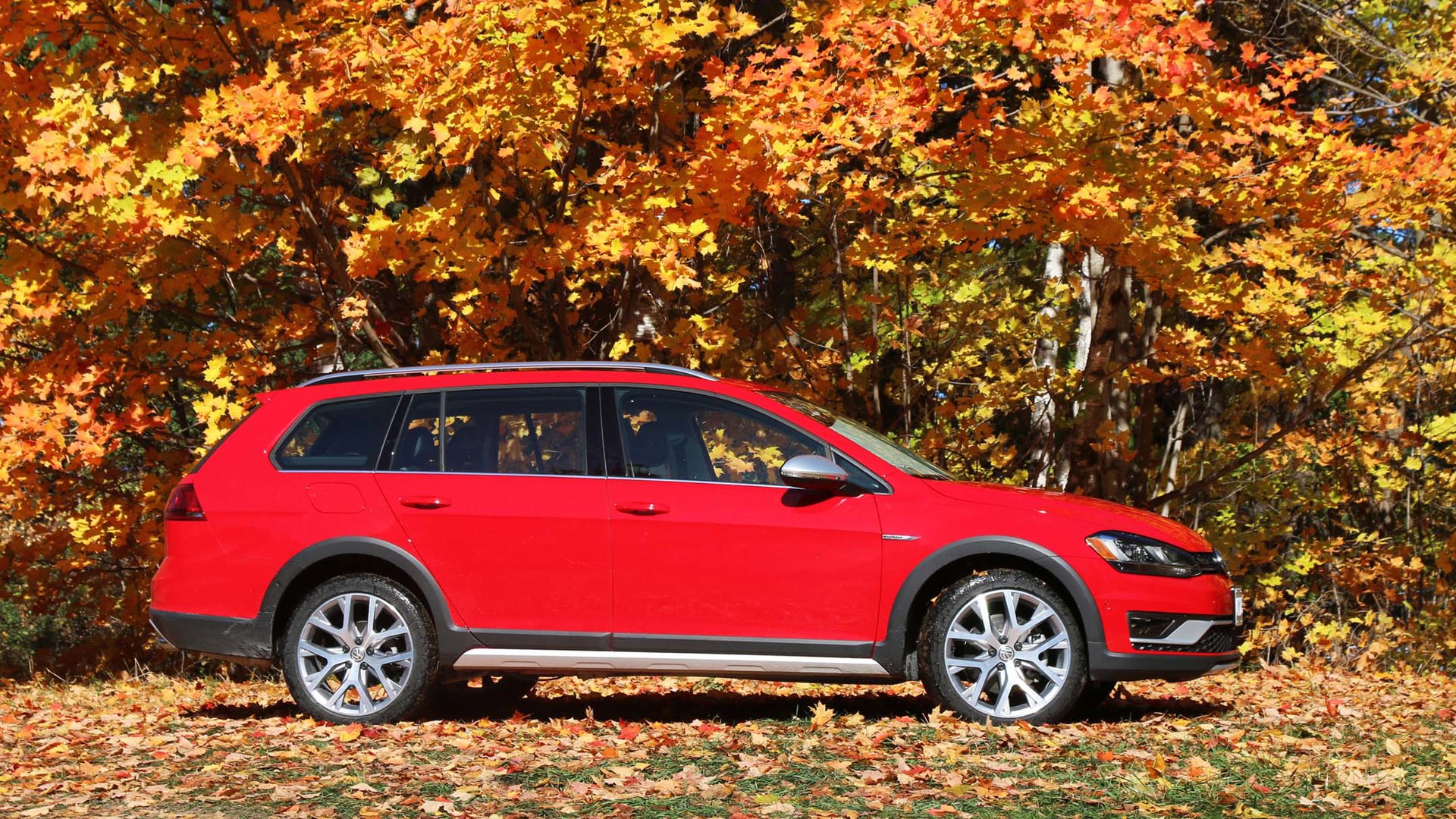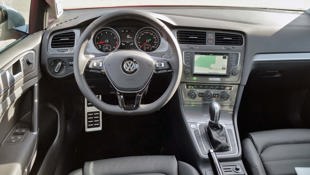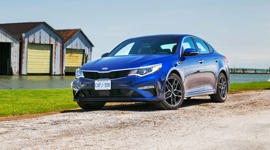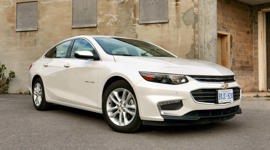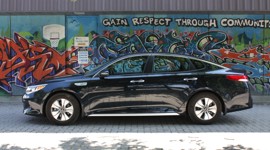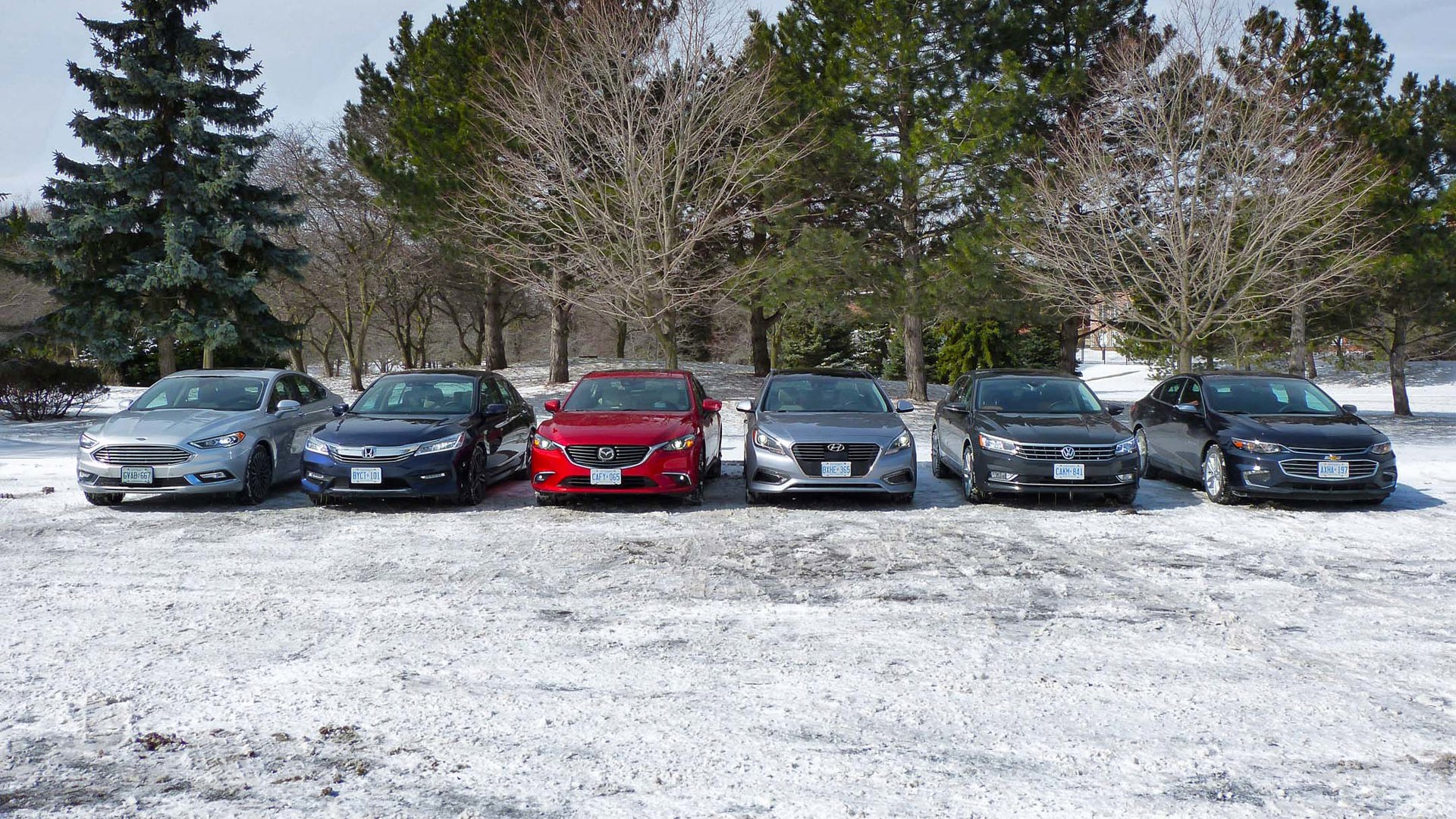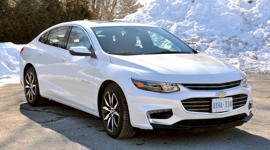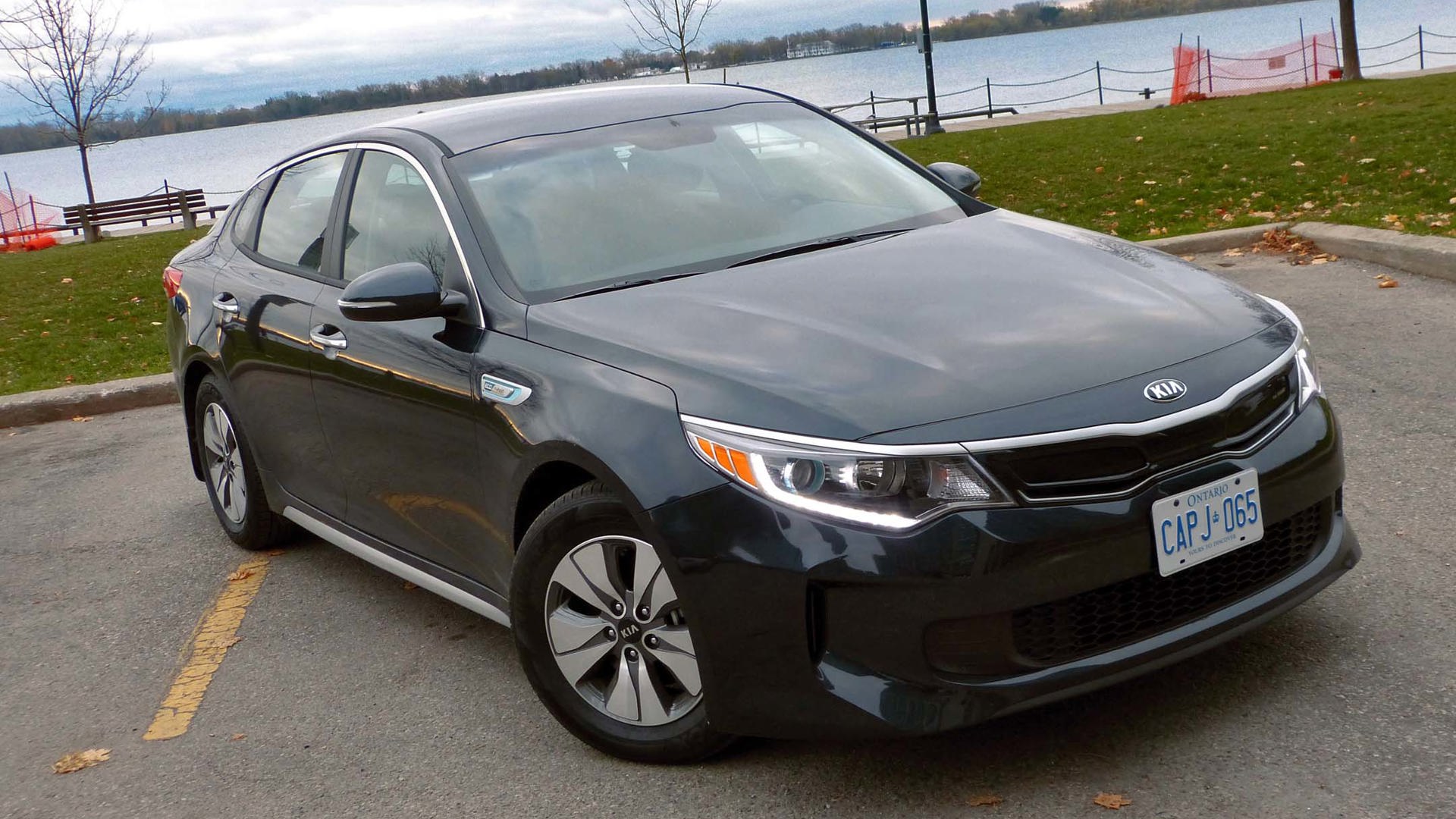[Editors Note: This category has a set of players who were traditionally classed as “mid-size” and perhaps could have been better labelled “full-size” or “family car” in this instance]
Although there’s a necessary degree of fluidity to it, “Large Car” in Canadian Car of the Year parlance also includes mid-size models and the odd boundary-nudging compact. It’s a densely populated segment, the best-selling part of the US traditional car market, and while Canadians tend to favour compacts over mid-sizers, it’s still important here.
Because hybrid powertrains are considered an alternate fuel source (like diesel, natural gas, or full-electric), there were two models entered this year in both their conventional and hybrid forms. Since much is otherwise common between those versions, for the sake of ease, they’re discussed together.
2017 Chevrolet Malibu ($33,285)
2017 Chevrolet Malibu Hybrid ($34,880)
Coincidentally, both of the Chevy Malibus I drove were the same “Cajun Red” colour, and aside from their wheels, both were virtually indistinguishable from each other. In AJAC’s testing, even their 0–100km/h acceleration was almost the same (the quicker hybrid posting an 8.5 second sprint, with the conventional Malibu close behind at 8.8). Odd that they’d be so close with such different propulsion systems: the “normal” Malibu uses a 160 hp 1.5L turbo four, the hybrid a naturally aspirated 1.8L and a pair of motor/generators maxing out at 182 hp. (A 250 hp 2.0L turbo four is also available in the Malibu’s top trim level.)
The Hybrid does require some compromises to deliver its substantially lower official consumption ratings – 4.8/5.5/5.1 L/100 km city/highway/combined, relative to the 1.5L turbo Malibu’s 8.8/6.5/7.8. There’s the obvious, the not insubstantial roughly $3,600 price difference between the Hybrid and the LT trim Malibu that are the most comparable to one another, but there’s also the 118 L of trunk capacity occupied by the hybrid’s battery pack. At least the folding rear seatback remains.
Using an adaptation of the plug-in electric/hybrid Chevy Volt’s powertrain did appear to give the Malibu Hybrid the ability to operate electrically far more often and for longer than the Kia Optima Hybrid also on hand.
Out on the road, the Hybrid’s electrified powerplant proved to be smoother than that of its sibling, but both shared the good road manners inherent in this latest evolution of GM’s well-regarded “Epsilon” platform, a basic chassis design shared with (among others) the Buick Regal/Lacrosse, Chevy Impala, and Cadillac XTS. Chevrolet has struck a good compromise between ride and handling in this latest ’Bu.
Although the previous Malibu was also nice to drive, it was somewhat blocky and bland to look at, and it had substantially less rear seat legroom than the generation it replaced. Not this time. Longer and sleeker, this Malibu is a real looker, and it features noticeably improved interior finishes and over 40 mm more rear legroom, thanks to a 90 mm stretch in wheelbase.
As is the case in most of the current generation of swoopily styled sedans, rear-seat headroom is merely good, not great. While adequate for average-sized folks, those who need to regularly transport NBA-proportioned rear-seat passengers should look not towards the Malibu or even its competition, but a crossover or minivan.
Both Malibus offer (at least optionally) technologies such as automatic emergency braking for both collision mitigation and pedestrians, and lane-keeping and parking assistance. Apple CarPlay and Android Auto join 4G LTE-supported onboard Wi-Fi to support the techie crowd.
2017 Kia Optima ($27,495)
2017 Kia Optima Hybrid ($29,895)
This is a substantially new car relative to the previous Optima, but you’d be hard pressed to notice it without having an intimate familiarity with Kia’s mid-size sedan line, as it shares a lot of its primary styling cues with the outgoing model. Credit lead designer Peter Schreyer, former head of Audi/VW and the artist behind the original Audi TT, for the bold and handsome shape of both generations.
Optima Spotter’s Guide: the rear quarter windows are in the roof pillars instead of the rear doors on the newer models.
The LX Eco-T models entered feature the optional 178 hp 1.6L turbo four in place of the Optima’s base 185 hp 2.4L four. The smaller engine actually has greater torque and benefits from a transmission with an additional ratio (now seven), so its performance should be slightly better. The official 8.4/6.1 city/highway consumption ratings are definitely better.
The Hybrid model combines a 2.0L Atkinson-cycle four with a 46 hp electric motor to produce a combined peak output of 192 hp. Unlike most current hybrids, the Optima Hybrid uses a conventional six-speed automatic transmission. No oddly disconnected-feeling CVT effect here.
Of the six vehicles tested in this category by AJAC, the Optima LX Eco-T bettered the next quickest VW Golf Alltrack to 100 km/h by just a tenth of a second (taking 8.1 s), acceleration that’s typical for this segment; the Optima Hybrid trailed just 0.3 s behind, at 8.4 s.
With Kia’s sales popularity in Europe and the under the guidance of Schreyer (now Head of Global Design for Hyundai and Kia), it’s no surprise that the interior styling of the Optima has a very Germanic influence. It was a surprise though, to find a heated steering wheel and memory seating and mirrors in both Optima models. There is less rear seat legroom here than in the Chevy Malibu, but it’s still average-size adult compatible, as I could comfortably sit behind my 5'11" self.
Relative to the Chevy, the hybrid Kia feels more like an advanced, nearly imperceptible start-stop system than a full-on electric car, even if it is capable of propelling itself on battery power alone. As is often the case with hybrids, the potential fuel savings make it difficult to justify the $4,000 premium the hybrid adds to a comparable LX+ model – it necessarily has to be a decision of the heart as well.
Both versions provide a good balance between ride comfort and chassis control, echoing the advances made with corporate cousin Hyundai’s related Sonata. We’ve gotten to the point with these two Korean brands that we no longer need to add the “for a Kia” to phrases like “this car drives really nicely” or “it has a well-finished interior.”
2017 Toyota Prius ($32,365)
The first truly popular hybrid vehicle, and now in its fourth generation, Toyota’s Prius continues to be one of the few standalone hybrid models, as there is no version of this car available with a conventional powertrain. All Prius models to date use a combination of a small four-cylinder engine running the Atkinson cycle paired with a transaxle housing two electric motor/generators.
This latest model is the first Toyota to use an all-new modular chassis design creatively dubbed “Toyota New Global Architecture” (TNGA). If this Prius is any indication, future Toyotas will be well-mannered, with good handling and precise steering. This is the best-driving Prius I can recall.
That’s not to say perfect. With so much emphasis on efficiency, the Prius almost seems surprised by assertive throttle inputs. The combined output of the Prius’ 1.8L gas engine and electric motors is 121 hp, so it would be unreasonable to expect Hellcat-style acceleration. In AJAC’s testing, the Prius was a full two seconds behind the next-slowest Malibu, taking 10.8 seconds to reach 100 km/h from rest. It’s the trade-off for generating some exceptional fuel consumption numbers: the Prius is rated 4.4/4.6/4.5 L/100 km city/highway/combined. True hyper-milers will doubtless do even better.
Styling is subjective, so suffice it to say that I’ve always appreciated the near-trademark aerodynamic silhouette of the Prius, but that I’m less sold on the oddly angular nose than on the similarly odd, yet visually interesting rear.
The bizarre white plastic trim in the steering wheel spokes, shifter bezel, and centre console would be a deal breaker for me. A shame, really, as the rest of the interior, while deeply unconventional, is actually pretty cool-looking. You could slap a Citroën badge on this and it’d be believable. Better yet, the practical Prius has both a habitable rear seat and a large cargo area accessed by a hatch with a relatively low lift-over – odd or not, this car is everyday liveable.
2017 Volkswagen Golf Alltrack ($38,215)
The Golf Alltrack is Volkswagen’s first attempt (in our market, anyway) at cashing in on the same trend of ruggedized, lifted station wagons posing as crossovers that spawned the Subaru Outback, Volvo XC70, and even the Audi Allroad. It also marks the introduction of an all-wheel-drive option to the Golf SportWagen that forms the basis of the Alltrack, since the Mexican facility that produces the wagon model for North American consumption was previously limited to building front-wheel-drive vehicles.
Although the Golf hatchback is classified as a compact, the far greater interior volume of the wagon body makes it a better fit in the “Large Car” category. Tall-ish proportions provide better than expected passenger space, and great outward visibility makes the Alltrack feel roomier than it is. The added ride height relative to conventional Golf models gives this wagon-on-stilts better compliance and a smoother ride without completely muddying its European precision.
Unsurprisingly, the Golf Alltrack’s cabin is well-made, and features materials with a quality feel; interiors are a Volkswagen Group strength, after all.
Alltracks are powered by the same 170 hp 1.8L turbocharged four-cylinder TFSI engine that’s found under the hood of any Golf not wearing “GTI” or “R” on its rump, paired with a six-speed twin-clutch automatic and all-wheel drive (non-Alltrack wagons are available with a five-speed manual as well). With 199 lb-ft of torque available through much of its lower rpm range, it’s a flexible, robust-feeling powerplant. Its premium fuel preference is a major downside, however.
Were cost not a factor, the Alltrack would be my guess for the winner of this category – it’s that well-rounded. Unfortunately, with nearly $3,000 worth of upgraded forward lighting and collision mitigation hardware, the already expensive VeeDub is at a disadvantage in this group. It needs to be viewed as a bargain Audi to really make sense.
Alternatives
As in the past, this year’s event included only new or substantially changed models, with the exception of those that were not available in time to participate last year: the Malibu, non-hybrid Optima, and Prius met that exemption.
Two vehicles that potentially could have participated, but that were not entered, are the heavily revised Honda Accord Hybrid and the new Sport version of the restyled-for-2017 Ford Fusion. While both respectable vehicles in their own right, these are relatively niche models of mainstream vehicle lines, so their absence doesn’t greatly affect the relevance of the results.
Large and mid-size sedan shoppers should check out one of my personal favourites, the Mazda6, which is a hidden gem in this segment. The Honda Accord, Toyota Camry, Hyundai Sonata, Chevrolet Impala, and Ford Fusion are just of few of the other players in this category that also deserve a drive if you’re in the hunt for a new car.
By the numbers
|
Model |
As-tested price |
Horsepower (hp @ rpm) |
Torque (lb-ft @ rpm) |
Transmission |
Fuel economy (L/100 km, cty/hwy/cmb) |
|---|---|---|---|---|---|
|
Chevrolet Malibu |
$33,285 |
160 @ 5,700 |
184 @ 2,500–3,000 |
6AT |
8.8/6.5/7.8 |
|
Chevrolet Malibu Hybrid |
$34,880 |
182 |
375 |
Hybrid-AT |
4.8/5.5/5.1 |
|
Kia Optima |
$27,495 |
178 @ 5,500 |
195 @ 1,500–4,500 |
7AT |
8.4/6.1/7.4* |
|
Kia Optima Hybrid |
$29,895 |
192 @ 6,000 |
271 @ 1,770 |
6AT |
6.0/5.1/5.6* |
|
Toyota Prius |
$32,365 |
121 |
105 |
CVT |
4.4/4.6/4.5 |
|
Volkswagen Golf Alltrack |
$38,215 |
170 @ 4,500 |
199 @ 1,600 |
6AT |
10.6/8.0/9.4 |
|
*EPA figures; NRCan fuel consumption rating not yet available |
|||||
